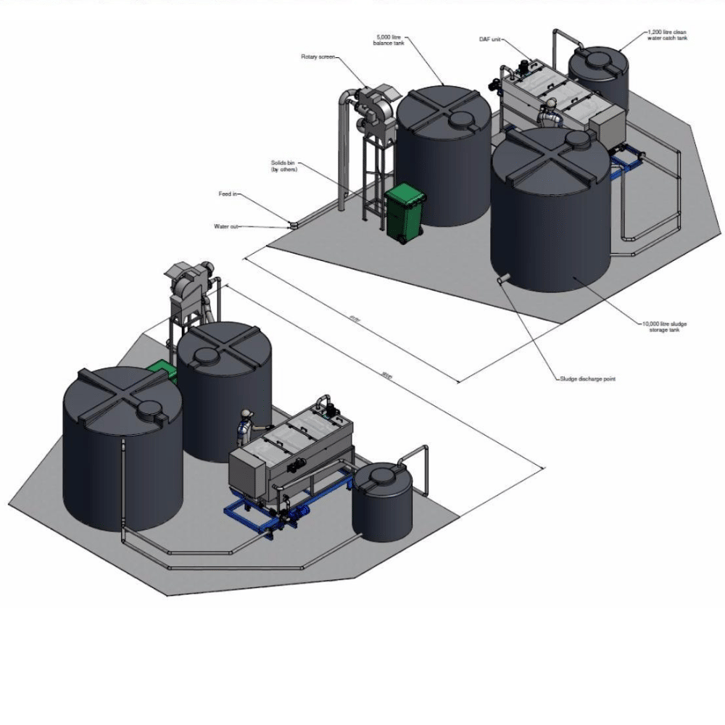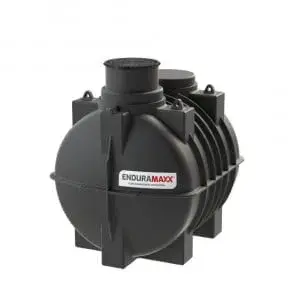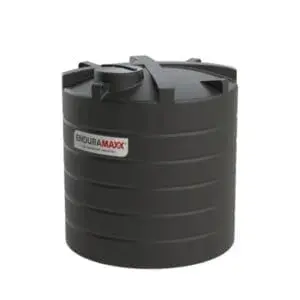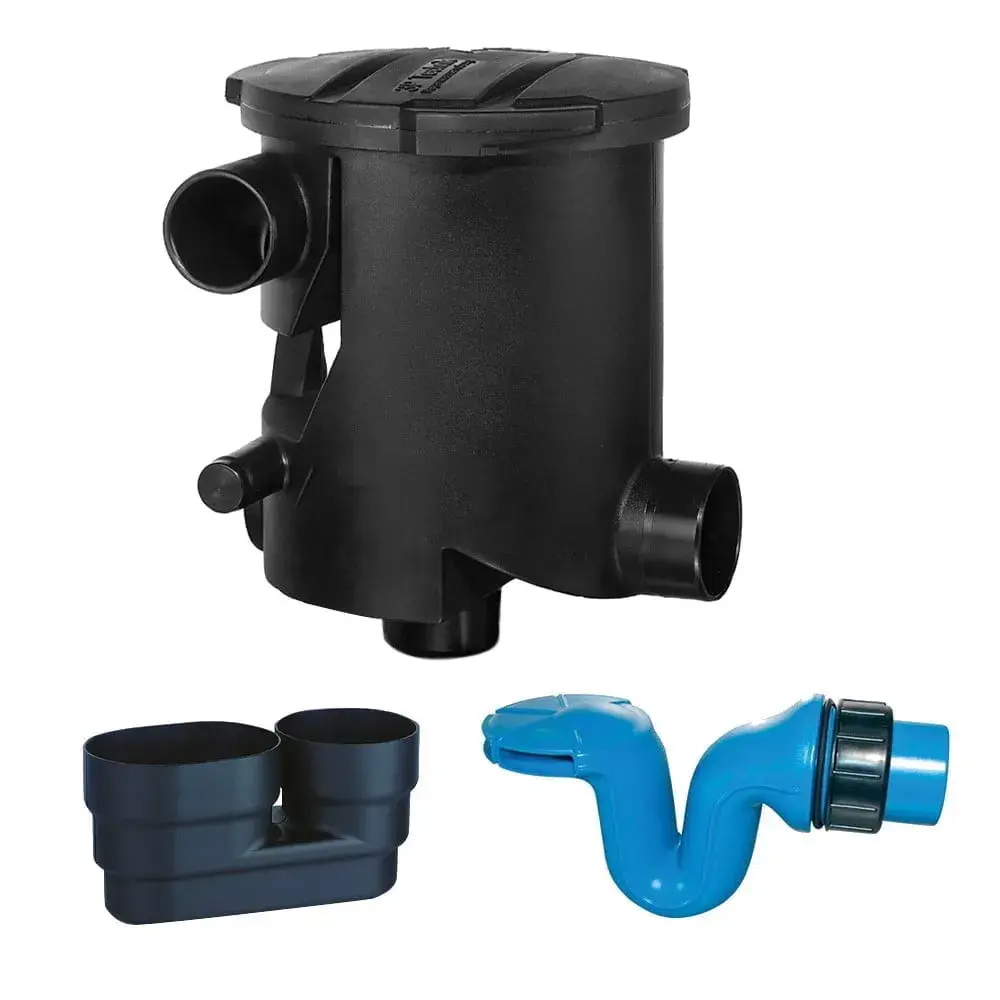What Is Flocculation In Water Treatment? And how flocculation is used in wastewater treatment, a requirement for treated wastewater.

What is flocculation in water treatment? And How flocculation is used in wastewater treatment. One of the requirements for treated water leaving wastewater plants is the removal of suspended solids. Small solid particles affect the colour of the water and carry impurities into our natural water sources like rivers and the ocean.Phosphorus content must also be limited in wastewater as a release of phosphorus into rivers promotes algae growth and with uncontrolled releases, it has been known to cause mass die-offs of fish and other aquatic life. Some industrial applications generate high levels of phosphorus in their wastewater, which may even require pre-treatment before releasing it to wastewater treatment plants.
Enduramaaxx offers a wide variety of wastewater holding tanks and equipment. Find out more here.
How Does Flocculation Work?
Flocculation is based on a chemical process involving adding chemicals to the wastewater in sequence and allowing tiny solid particles to collect together in a larger mass called a floc. As a treatment of wastewater, flocculation is carried out in stages.
STAGE 1
Suspended solid particles in wastewater are negatively charged. In the first stage of flocculation, a coagulant like aluminium sulphate is added to the wastewater and the positively charged coagulant molecules neutralize the negatively charged solid particles suspended in the water. This paves the way for them to flocculate together into a larger mass.
STAGE 2
The wastewater must be agitated with mixers with a high energy mixer required initially to ensure that the coagulant spreads throughout the water. When flocculation is in progress the mixing energy is reduced to prevent the mass of particles from separating.
STAGE 3
Once floc is beginning to form, a polymer chemical is added to the wastewater. Polymers bridge the flocculant from micro to macro flocculant making the mass of particles get bigger. This chemical also binds the collected mass together so that it does not easily disintegrate.
STAGE 4
After flocculation is complete, the large solid masses can be removed from the wastewater stream through settling where the floc drops to the bottom for removal or through the use of filters. Care must be taken when cleaning the filters to ensure that the phosphorus-rich floc is contained and treated.
Where is flocculation used in wastewater?
Phosphate enters our wastewater systems from human and animal waste, detergents and food residues. Food and Beverage plants are therefore prime sources of phosphate in wastewater and flocculation is a key method for the removal of phosphate.
Enduramaxx Wastewater Storage Tanks
Enduramaxx offers a number of solutions for the wastewater storage to help store pre-treated and treated water and chemicals for this treatment process. Chemical dosing, pH dosing, is a common method of wastewater treatment. Regulations require treated wastewater to be in a neutral pH range when discharged into the environment and our range of dosing tanks and bunds can be used. Dosing systems can be set-up as in-line or in a recirculating configuration using both alkaline or acid dosing to correct for low or high pH respectively.
Disinfection is a process that kills off remaining bacteria in wastewater streams and generally, chlorine-based systems are used to achieve this. This protects workers and the general public from potential health hazards associated with unwanted bacteria in the wastewater system. It is particularly important where water is recycled for use.
Contact Enduramaxx to discuss your requirements for chemical and wastewater storage tanks for more details.
Posts By Topics
- Blog (303)
- Chemical Storage Tanks (118)
- Chemical Dosing Tanks (114)
- Chemical Tanks (114)
- Water Tanks (58)
- Rainwater Harvesting Tanks (43)
- Vertical Rainwater Tanks (31)
- Vertical Storage Tanks (31)
- Cone Bottom Tanks (19)
- Conical Cone Tanks (18)
- Rainwater Harvesting (17)
- Water Bowsers (15)
- Horizontal Tanks (14)
- Potable Water Tanks (13)
- Farming (9)
- Case Studies (8)
- Industrial Storage Tanks (7)
- Liquid Fertilser Storage Tanks (6)
- WRAS Approved Potable Tanks (6)
- Wine and Beer Production (6)
- Horizontal Transport Tanks (5)
- Microbrewery (5)
- Rainwater (5)
- Category 5 Break Tanks (4)
- Cider Production (4)
- Mixer Tanks (4)
- Molasses Tanks (4)
- Polyethylene tanks (4)
- Rainwater Filter Kits (4)
- SPECIALIST & BESPOKE TANKS (4)
- Bunded Tanks (3)
- Slimline Tanks (3)
- WRAS Approved (3)
- Clarification Tanks (2)
- Crosslinked Polymer Tanks (XLPE) (2)
- Fertiliser Tanks (2)
- Sump Tanks (2)
- Tank Installation (2)
- Water Butt (2)
- underground water tanks (2)
- ACCESSORIES & FITTINGS (1)
- ATV & UTV SPRAYING UNITS (1)
- Above Ground Effluent Tanks (1)
- Bespoke Tank Frames (1)
- Category 5 Turret (1)
- Caustic Soda Tanks (1)
- Closed Top Bunded Tanks (1)
- Craft beer (1)
- Effluent Tanks (1)
- Enduramaxx (1)
- Ferric Chloride Tanks (1)
- Fire Safety Regulations (1)
- Fire Sprinkler Water Storage Tanks (1)
- Industrial Water Tank (1)
- Open Top Bunded Tanks (1)
- Open Top Cone Tanks (1)
- Open Top Vertical Tanks (1)
- Polyethylene Potable Water Tanks (1)
- Polyvinylidene Fluoride (PVDF) Tanks (1)
- Polyvinylidene Fluoride Tanks (PVDF) (1)
- Pressure Washers (1)
- Pro Series Spot Sprayers (1)
- RWH (1)
- Sodium Hydroxide Storage Tanks (1)
- Sprayer Fill-up Tanks (1)
- Uncategorised (1)
- liquid fertiliser tank (1)
Sign up to the newsletter
enduramaxx.marketing
Related Posts
What Is Flocculation And Flash Mixing In Water Treatment
Flash Mixing and Flocculation in industrial wastewater treatment is a complex process in which...
Wastewater Sludge: Treatment & Disposal Explained
The methods of sludge treatment & disposal in the treatment of sludge is a key element of...
Sludge Tanks For Food & Drink Wastewater Treatment
Sludge tanks for food & drink wastewater treatment, the characteristics and volume of wastewater...
Related Products
From £1,080.00 inc. VAT
£900.00 exc. VAT
From £1,344.00 inc. VAT
£1,120.00 exc. VAT
From £768.00 inc. VAT
£640.00 exc. VAT
£480.00 inc. VAT
£400.00 exc. VAT






